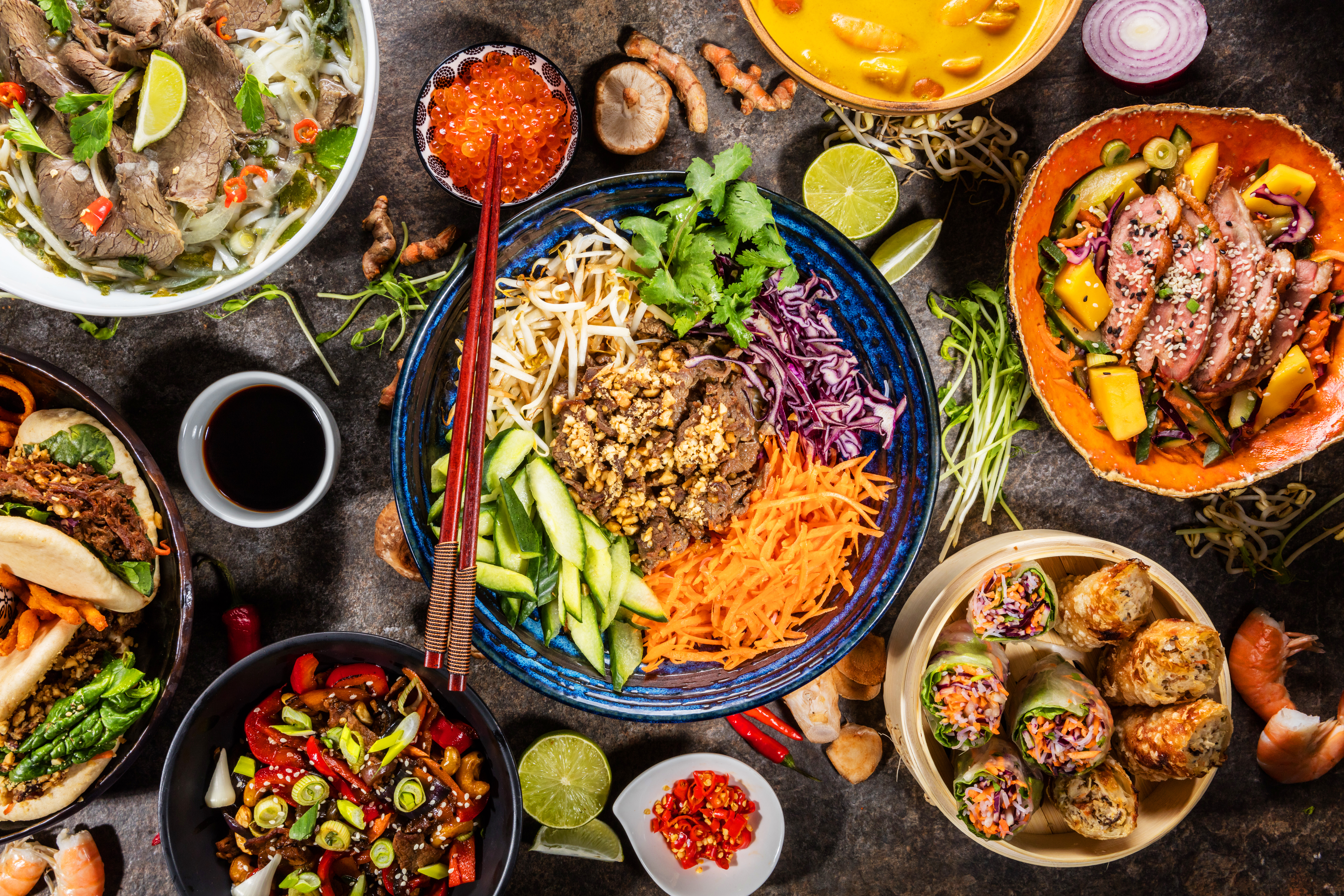All about
Fish sauce

Fish Sauce: The Flavorful Essence of Southeast Asian Cuisine
In the world of culinary delights, fish sauce stands out as a unique and essential ingredient, particularly in Southeast Asian cuisine. With its rich flavor and centuries-old tradition, fish sauce adds the perfect unique flavor and a touch of the sea to various dishes. In this blog post, we'll explore the history, production process, culinary uses, health benefits, and more about fish sauce.
A Journey Through History
In Southeast Asia, fish sauce has a particularly rich history. It is believed to have originated in Vietnam, where it was known as "nuoc mam." The process of fermenting fish to create a sauce was practiced by the indigenous people of the region, who used local fish and sea salt to produce the condiment.
Fish sauce production and consumption eventually spread to neighboring countries such as Thailand, Cambodia, Laos, and the Philippines, each region adding its unique twist to the sauce. Over time, fish sauce became an important part of the local cuisines, influencing various dishes and flavors. Today, fish sauce continues to be a staple ingredient in the region and has gained popularity worldwide, showcasing its long-lasting legacy and the timeless demand for its distinct flavor it has.
The production of fish sauce often follows traditional methods that have been passed down through generations. These methods involve fermenting fish and extracting their essence, requiring skill, patience, and always being consistent by using ancient cultural techniques. By keeping these traditional practices helps maintain cultural heritage and builds a sense of community.

From Catch to Bottle: The Art of Fish Sauce Production
The process of making fish sauce involves several steps that transform fish into a flavorful and aromatic condiment. While there may be slight differences in techniques across different regions, the overall process remains similar.
1. Selection of fish: Fresh, high-quality fish with a high protein content, typically small oily fish like anchovies or sardines, are selected for fish sauce production. The fish are often sourced from local waters to capture regional flavors.
2. Cleaning and deheading: The fish are thoroughly cleaned to remove impurities and scales. They are then typically beheaded, although, in some variations, whole fish may be used.
3. Layering with salt: The cleaned fish are layered in large barrels or vats and sprinkled with sea salt. The salt acts as a preservative and draws out the moisture from the fish.
4. Fermentation: The layered fish and salt mixture is left to ferment for a longer period, between a few months to over a year. During fermentation, naturally occurring enzymes and bacteria break down the fish proteins and convert them into amino acids, which make the savory flavor of fish sauce.
5. Pressing and straining: After fermentation, the fish and salt mixture is pressed to separate the liquid (fish sauce) from the solids. Traditional methods involve placing weights or using hydraulic presses to extract the liquid. The fish sauce is then strained to remove any remaining fish bodies or impurities.
6. Aging: The strained fish sauce is typically filtered through fine mesh or cloth to achieve a clear and smooth consistency. Some producers may choose to age the fish sauce further, allowing it to develop more complex flavors and deepen in color.
7. Bottling and packaging: The finished fish sauce is bottled or packaged for distribution. It may be stored in dark bottles or containers to protect it from light, as exposure to light can affect its quality.

A Symphony of Flavors
Fish sauce acts as a powerful flavor enhancer, adding a savory, rich taste to a wide range of dishes. Just a small amount can intensify the overall flavor and provide a depth that is difficult to achieve with other ingredients. It is often used as a seasoning or marinade for meats, seafood, and vegetables. Its salty and savory nature helps to tenderize and infuse ingredients with a distinctive taste. It also serves as a key ingredient in many Southeast Asian sauces and dips. It forms the base for popular sauces like Vietnamese Nuoc Cham, Thai Nam Pla Prik, or Filipino Patis-based dipping sauces. It can be used in soup dishes like Vietnamese Phở, Thai Tom Uum, or Filipino Sinigang to enhance the savory base and create a more robust and satisfying flavor.
The versatile role of fish sauce extends beyond these examples, and its usage continues to grow as creative chefs and home cooks experiment with new dishes all the time. The distinctive flavor and depth it brings to dishes make fish sauce an amazing ingredient in many cuisines around the world.

Deliciously Nutritious: Goodness in Every Drop
Fish sauce offers many nutritional benefits and contains essential nutrients. While the exact nutritional profile may vary slightly depending on the brand and production methods, here are some potential benefits and nutrients found in fish sauce. Protein is taken from the fish used in its production, and minerals such as calcium, and magnesium are important for healthy bones and nerve functioning and has vitamin B5. Fish sauce is typically low in fat and calories, making it a suitable condiment for those watching their calorie intake. It can add flavor to dishes without significantly increasing overall calorie content.
It's important to note that fish sauce can be high in sodium due to its salt content, so individuals on restricted sodium diets should consume it in moderation. Additionally, the specific nutritional content can vary depending on the brand and production process, so it's always a good idea to check the label for accurate information. Overall, fish sauce can be a flavorful addition to dishes while providing some essential nutrients, but it should be enjoyed as part of a balanced diet.
The World of Fish Brands – What are the differences?
We have many brands that have established themselves as leaders in the fish sauce market, offering consistent quality and a distinct taste that adds authenticity to Southeast Asian dishes. They are widely recognized and appreciated by fish sauce enthusiasts.
You may have come across a word such as "First press" fish sauce, this means that the sauce is bottled from the first time the fermenting barrels are drained, which is also a major indicator of its quality.
Another point of note in buying Vietnamese fish sauce is to see if it is made from the first draw, usually called nước mắm nhỉ or nước mắm thượng hạng. The advantage of it is a more pure, sharp taste.

What is the N number in fish sauce?
The Vietnamese brands use a "degree N" number to indicate the amount of protein in the fish sauce, for example, Thanh Ha indicates 38°N. The higher the number, the more protein. You might notice that some brands contain added protein.
 |
Minh Ha - Thanh HaMinh Ha - Thanh Ha is a Vietnamese fish sauce brand known for its production in the Thanh Ha region, which is located in the Quang Nam province of Vietnam. They have many different flavors and included is a vegan range of fish sauce. |
|
|
|
PantaiPantai is a popular brand of fish sauce originating from Thailand. Pantai is known for producing high-quality fish sauce that is widely used in Thai cuisine and appreciated by both home cooks and professional chefs. We also range fish sauce from brands such as Three Crabs and Au Lac, however, Au Lac only produces Vegan fish sauce which is a perfect option for many who have different dietary choices. |
|
Fish sauce, with its potent flavor and interesting history, remains an irreplaceable ingredient in the culinary world. Whether you're a chef or an adventurous home cook, exploring the uses of fish sauce can unlock a world of flavors and elevate your dishes to new heights. Embrace the rich essence of fish sauce and embark on a flavorful journey through Southeast Asian cuisine and beyond.


